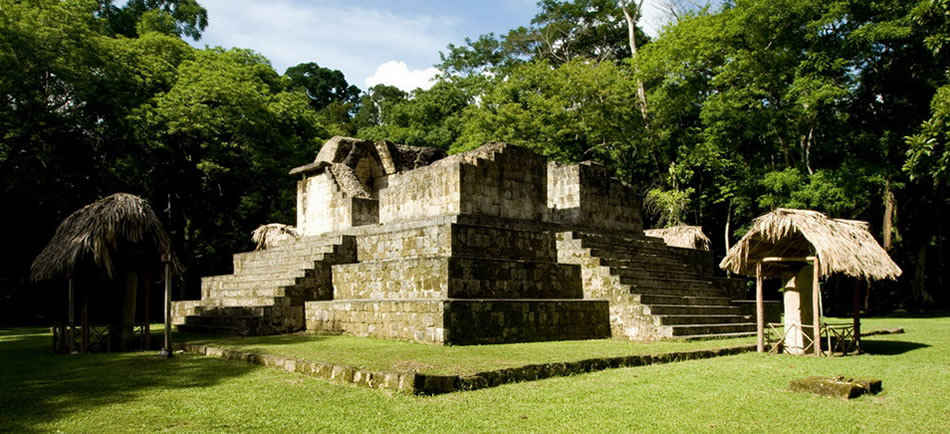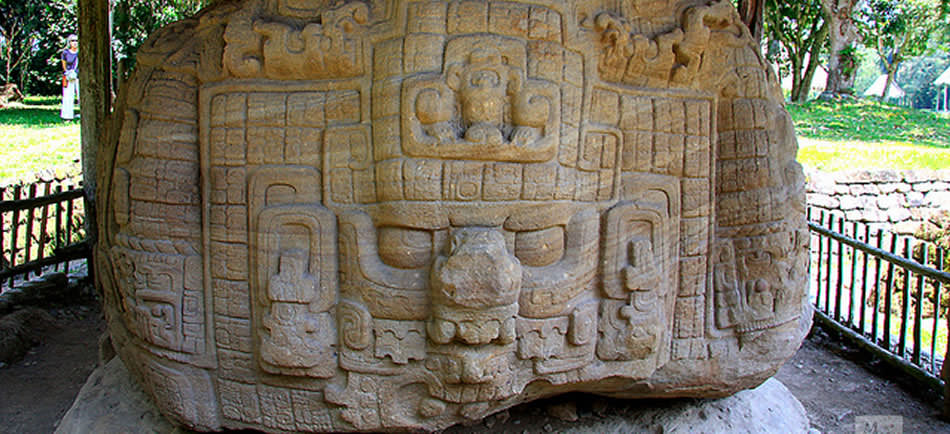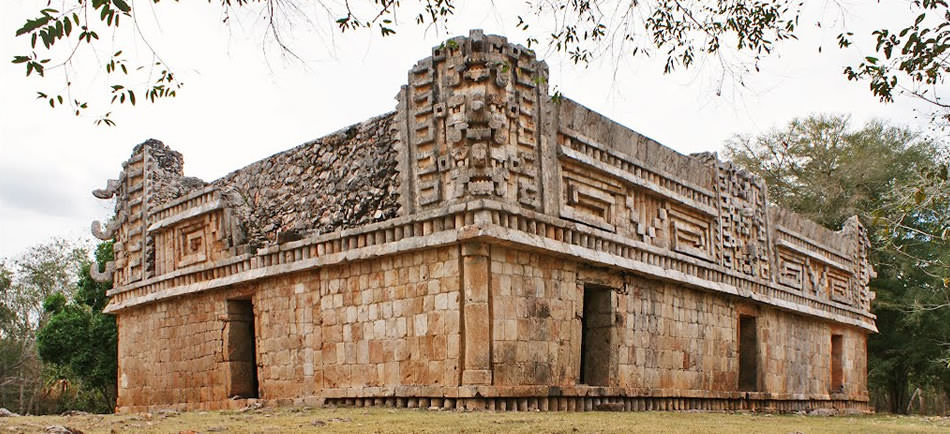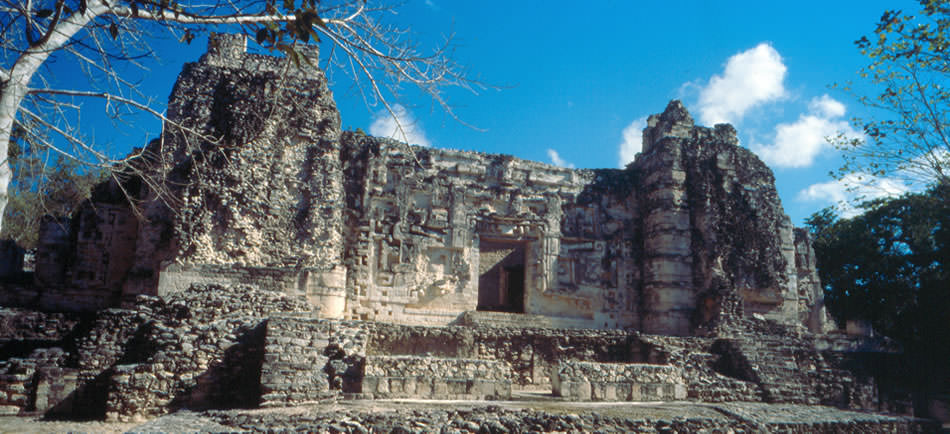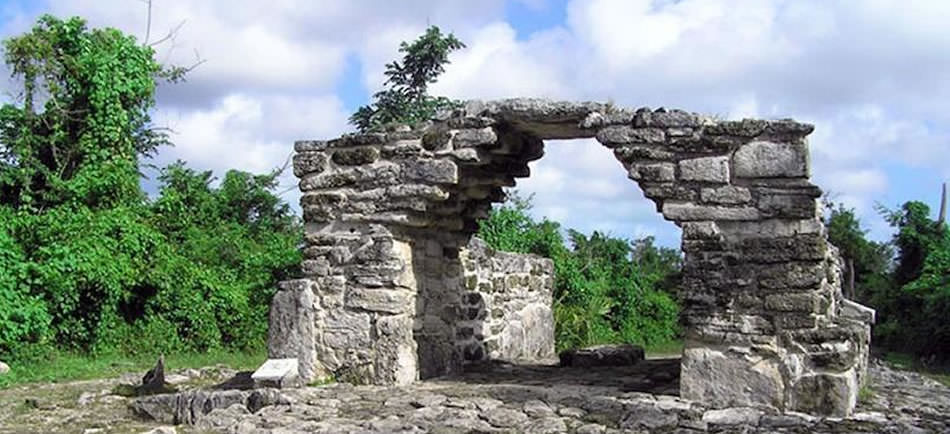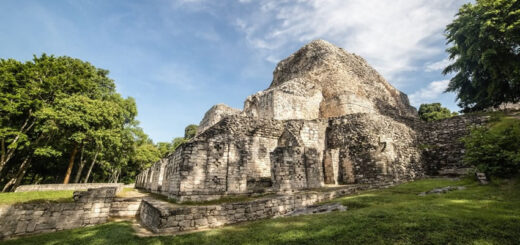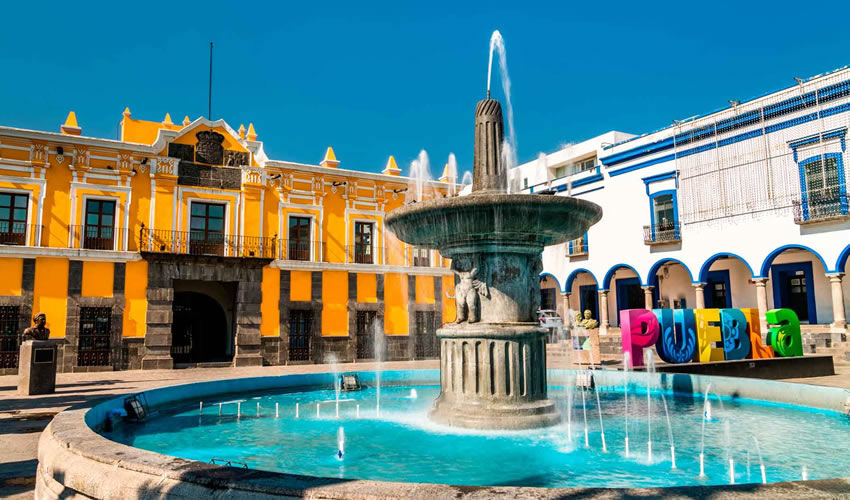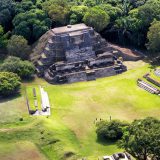
El Mirador
El Mirador is a large pre-Columbian Mayan settlement, located in the north of the modern department of El Petén, Guatemala.
Discovery
El Mirador was first discovered in 1926, and was photographed from the air in 1930, but the remote site deep in the jungle had little more attention paid to it until Ian Graham spent some time there making the first map of the area in 1962. A detailed investigation was begun in 1978 with an archaeological project under the direction of Bruce Dahlin (The Catholic University of America) and Ray Matheny (Brigham Young University). Dahlin’s work focused primarily on the bajo swamps and mapping, while Matheny’s team focused primarily on excavations in the site center and architecture. This project ended in 1983. To the surprise of the archaeologists, it was found that a large amount of construction was not contemporary with the large Maya classic cities in the area, like Tikal and Uaxactun, but rather from centuries earlier in the Pre-Classic era (see: Mesoamerican chronology).
In 2003, Richard D. Hansen, a Senior Scientist from Idaho State University, initiated major investigation, stabilization, and conservation programs at El Mirador with a multi-disciplinary approach, including staff and technical personnel from 52 universities and research institutions from throughout the world. By August 2008, the team had published 168 scientific papers,[citation needed] and produced 474 technical reports and scientific presentations[citation needed] as well as documentary films in the History Channel, National Geographic, the Learning Channel, BBC, ABC’s 20/20 and Good Morning America, 60 Minutes (Australia), and the Discovery Channel.
History
El Mirador flourished from about the 6th century BCE, reaching its height from the 3rd century BCE to the 1st century CE, with a peak population of perhaps between 100,000 and 250,000 people, judging by the size and extent of the labor pool required to build the massive constructions.[citation needed] It then experienced a hiatus of construction and perhaps abandonment for generations,[citation needed] followed by re-occupation and further construction in the Late Classic era, and a final abandonment about the end of the 9th century. The civic center of the site covers some 10 square miles (26 km2) with several thousand structures, including monumental architecture from 10 to 30 meters high.
An additional feature of El Mirador is the quantity and size of causeways, internally linking important architectural compounds, and externally linking the numerous major ancient cities within the Mirador Basin during the latter part of the Middle and Late Preclassic periods. The causeways were known anciently as sacbeob (the plural form of sacbe, meaning “white road” in Mayan, from sac “white” and be “road”). These are raised stone causeways raising 2 to 6 meters above the level of the surrounding landscape and measuring from 20 to 50 meters wide. One sacbe links El Mirador to the neighbouring site of Nakbe, approximately 12 km away, while another joined El Mirador to El Tintal, 20 km away.
While the city and the sister centers of the Mirador Basin thrived between 300 BCE and the Common Era (CE), apparently, the site was abandoned, as were nearly all other major sites in the area, by about 150 CE. A large wall, which must have been as high as 3 to 8 meters, had been constructed on the entire northern, eastern, and southern portions of the West Group of the city prior to its abandonment in the terminal Preclassic period, suggesting a possible threat that had been perceived by this time.
In the Late Classic period, ca 700 CE, portions of the site were reoccupied by a more modest occupation, with small structures nestled among the ruins of the great Preclassic center. The largest structure from this time period is scarcely more than 8 meters high, and many of the Preclassic building were plundered for stone materials for construction and lime making. The Late Classic occupants however, were noted scribes and artists.[9] The area of the Mirador Basin is the only known source of the “Codex-style Ceramics”, a particularly fine polychrome ceramic consisting of black line drawings on a cream colored background. The Late Classic occupation was brief, and by about 900 CE, the area was again nearly completely abandoned, and remains so until the present time.
The site
There are a number of “triadic” structures (around 35 structures), consisting of large artificial platforms topped with a set of 3 summit pyramids. The most notable such structures are three huge complexes; one is nicknamed “El Tigre”, with height 55 metres (180 ft).
The other is called “La Danta” (or Danta) temple. The La Danta temple measures approximately 70 metres (230 ft) tall from the forest floor, and considering its total volume (2,800,000 cubic meters) is one of the largest pyramids in the world. When the large man-made platform that the temple is built upon (some 18,000 square meters) is included in calculations, La Danta is considered by some archeologists to be one of the most massive ancient structures in the world.
Also the “Los Monos” complex is very large (48 meters high) although not as well known.
Most of the structures were originally faced with cut stone which was then decorated with large stucco masks depicting the deities of Maya mythology.
According to Carlos Morales-Aguilar, a Guatemalan archaeologist, the city appears to have been planned from its foundation, as extraordinary alignments have been found between the architectural groups and main temples, which were possibly related to solar alignments. The study reflects an importance of urban planning and sacred spaces since the first settlers.


